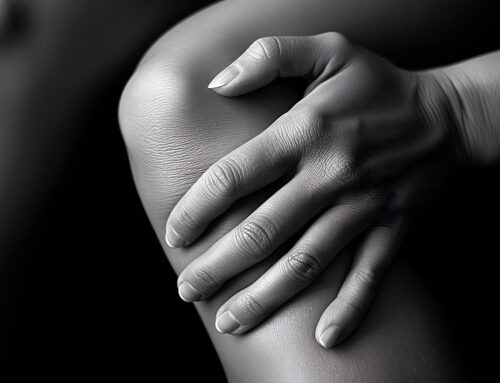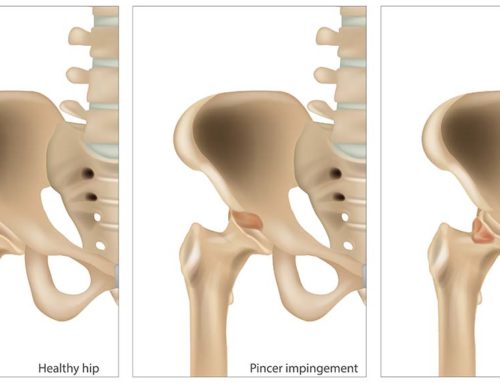Subscapularis Tendinopathy – A Common Cause of Shoulder Pain
By: Dr. Kevin McIntyre B.Kin., DC
Shoulder pain is a common complaint that affects people of all ages and activity levels. One potential source of shoulder pain is subscapularis tendinopathy. The subscapularis muscle is a critical component of the rotator cuff, which plays a crucial role in stabilizing and moving the shoulder joint. When the subscapularis tendon becomes irritated or damaged, it can lead to a condition known as subscapularis tendinopathy. In this blog, we will delve into the causes, symptoms, diagnosis, and treatment options for subscapularis tendinopathy.
The subscapularis muscle is situated beneath the deltoid muscle deep in the shoulder. As the name implies, “sub” means that it is underneath the scapula. In less technical terms, it is on the underside of your shoulder blade, just superficial to the ribs. It is responsible for internally rotating the arm. Tendinopathy is a broad term encompassing any tendon-related issue that generates pain, most notably characterized by degeneration and microtears. Subscapularis tendinopathy occurs when the tendon of the subscapularis muscle becomes damaged.
Causes of Subscapularis Tendinopathy
Several factors can contribute to the development of subscapularis tendinopathy:
- Overuse: Repetitive activities involving overhead arm movements, such as throwing, lifting, or reaching, can strain the subscapularis tendon.
- Aging: Tendons naturally lose their elasticity and strength with age, making them more susceptible to injury and tendinopathy. The blood supply to the tendon also changes with age, thereby making the tissue more susceptible to damage and having a poorer ability to recover.
- Muscle Imbalances: Weakness in other muscles around the shoulder, such as the rotator cuff muscles or scapular stabilizers, can lead to compensatory strain on the subscapularis.
- Trauma: A direct injury or trauma to the shoulder can damage the subscapularis tendon. This can occur with either the arm being forced into an extreme range of motion, or when the muscle-tendon unit contracts at such an intense level that it surpasses the capacity of the tendon.
Symptoms
Subscapularis tendinopathy can manifest in various ways. Typically, the pain is felt deep in the shoulder, and it will be aggravated with specific movements. Internal rotation of the shoulder will be weak and likely painful (such as when you throw). When relaxed, stretching the shoulder, and therefore lengthening the subscapularis, might also be painful. This would be a movement like reaching in the back seat of a car or putting your arm into the sleeve of a coat. Reaching behind the back may also be affected. Generally speaking, significant damage to the subscapularis will cause pain, weakness, and reduced movement.
Diagnosis
Accurate diagnosis of subscapularis tendinopathy requires a thorough evaluation by a healthcare professional. This typically involves a combination of:
- Medical history assessment: Your practitioner will inquire about your symptoms, activities, and any history of shoulder injuries.
- Physical examination: A hands-on assessment of shoulder movement, strength, and any signs of inflammation or tenderness.
- Imaging studies: X-rays, ultrasounds, or MRI scans may be used to visualize the subscapularis tendon and surrounding structures to identify any damage or abnormalities. Keep in mind this is normally not necessary, and a skilled clinician (such as a chiropractor or physiotherapist) should be able to determine whether this structure is involved. Most cases are amenable to conservative clinical rehabilitation and don’t require surgery; therefore, imaging will not change the approach to recovery and isn’t inherently necessary.
Treatment
The approach to treating subscapularis tendinopathy aims to reduce pain, promote healing, and restore shoulder function. Depending on the severity of the condition, treatment options may include:
- Rest and activity modification: Avoiding activities that exacerbate symptoms and giving the tendon time to heal is usually important in severe and acute cases. It is rare to recommend complete rest. Careful loading of the area through exercise and treatment will help to build it back up so that it’s capable of activity without causing pain.
- Physical therapy: Specific exercises to strengthen the subscapularis muscle, improve shoulder stability, and correct any muscle imbalances.
- Pain management: At Burlington Sports Therapy, we utilize modalities like acupuncture, laser and sometimes electrotherapy as a means of reducing a patient’s pain. In some cases, non-steroidal anti-inflammatory drugs (NSAIDs) can be helpful if recommended by your general practitioner.
- Surgical intervention: In severe cases where conservative treatments fail, surgical repair of the subscapularis tendon may be considered. This is relatively rare and would only be appropriate in cases that aren’t changing and show significant damage on imaging.
Prevention
Preventing subscapularis tendinopathy involves a combination of maintaining proper shoulder mechanics, engaging in regular shoulder-strengthening exercises, and avoiding overuse or improper technique during activities.
Conclusion
Subscapularis tendinopathy can significantly impact shoulder function and quality of life. Early diagnosis and appropriate management are essential for optimal recovery. If you experience persistent shoulder pain or suspect subscapularis tendinopathy, seeking professional guidance is crucial. By understanding the causes, symptoms, and treatment options, you can take proactive steps to manage this condition and promote shoulder health.








